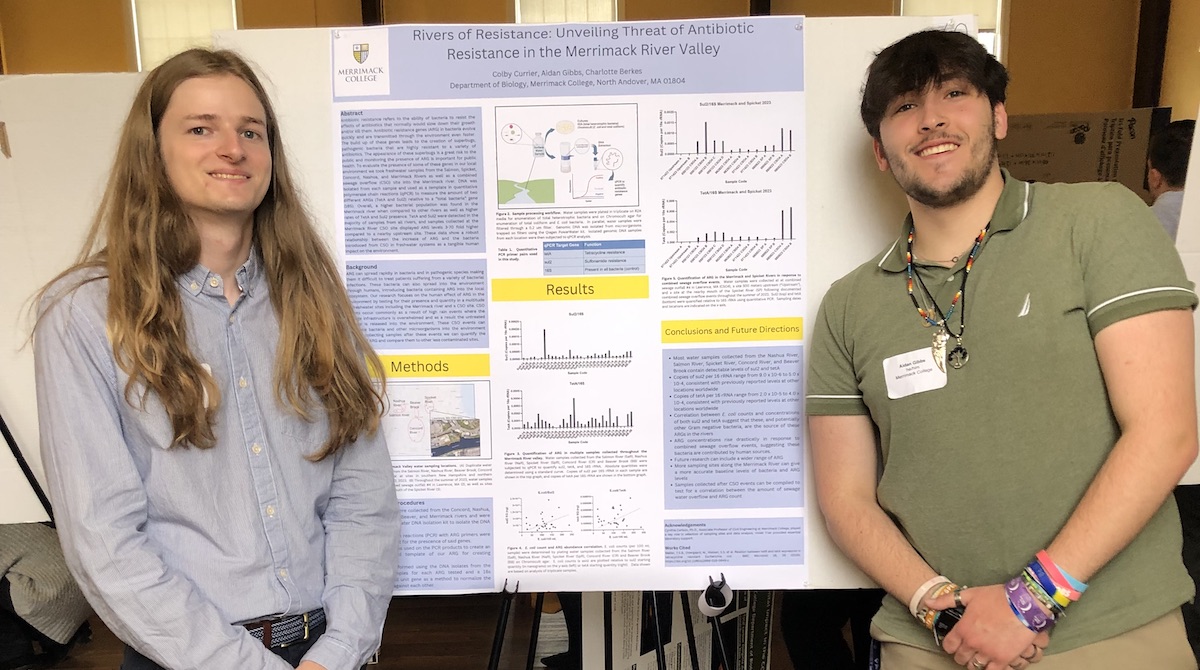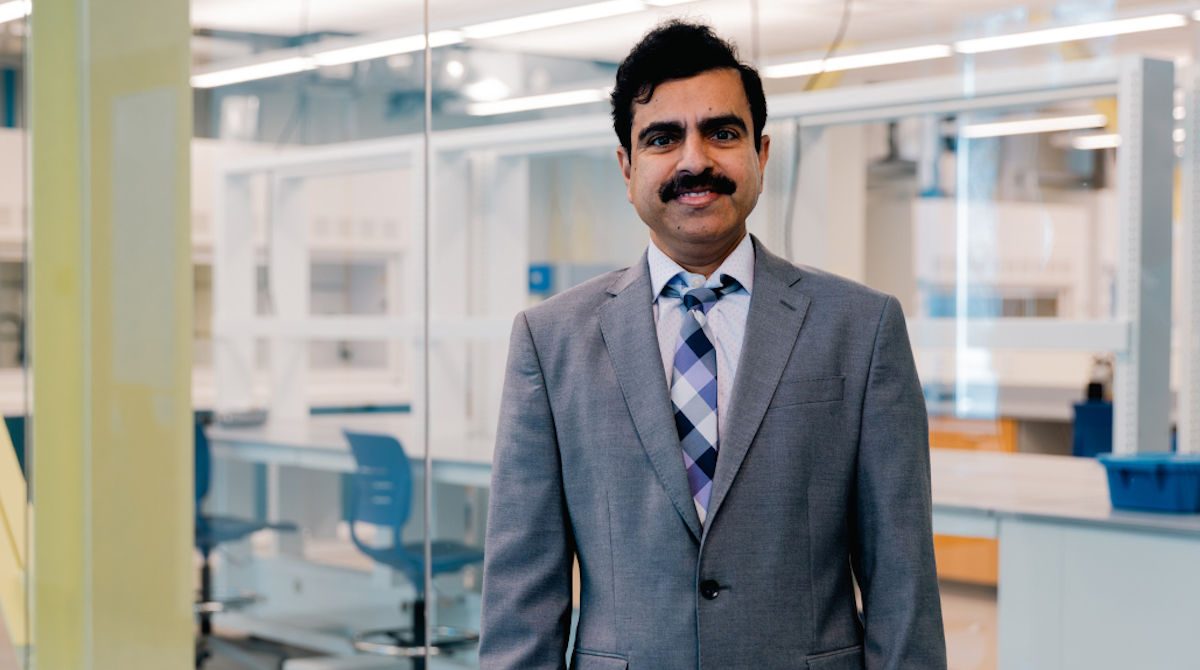Merrimack College hosted the Northeast’s best and brightest biology students at the 79th annual Eastern New England Biological Conference (ENEBC).
Since the 1940s, ENEBC has celebrated top biology student research from more than 40 member higher education institutions. This year saw 16 students from 13 colleges deliver presentations at Crowe Hall on Saturday, April 20. Three of these presentations were delivered by four Merrimack students.
“The level of the work and science they presented was really impressive,” said Charlotte Berkes, chair of Merrimack’s biology department, associate professor and one of the conference organizers.
Berkes moderated a presentation hosted by one of her students, Colby Currier M’24.
“My presentation was about antibiotic resistance in rivers in the Merrimack Valley,” Currier explained. “I tested for the presence of specific genes in bacteria that would make them resistant to antibiotics that are used to treat infections. I also tested for the rate that these genes were present in each sample.”
Alyssa Cugno M’24 discussed her research studying microplastics in the Lamprey River.
“Results are still preliminary, but we’ve seen various concentrations of microplastics in different sampling sites,” she said. “People seemed engaged and asked great questions. Overall, I was happy with the turnout and how well it all went.”
Finally, Katelyn Smalley M’24 and Carlos Viteri ’24 co-presented their research on the effects of environmentally realistic exposure to pharmaceutical and herbicide chemicals.
“We looked at their effects on aggressive behaviors on betta fish,” explained Smalley. “The objective of our study was to observe the combined effects of the herbicide atrazine and the pharmaceutical fluoxetine. Studies have looked at the effects of these independently but never in combination.”
Additional research on the project was conducted by Ben McDonnell ’25 and Yasmin Davis ’25, who were also in attendance.
“It was great to see everyone else present and field questions from other researchers and scientists,” said Viteri.
Overall, Berkes said the conference was a complete success. The total turnout, around 150 people, was much higher than she expected.
“Some of the faculty who have been around and involved in the ENEBC thought that it was the largest in recent history,” she said.
Later in the afternoon, 60 student research posters were presented at Cascia Hall, eight of which belonged to Merrimack students.





